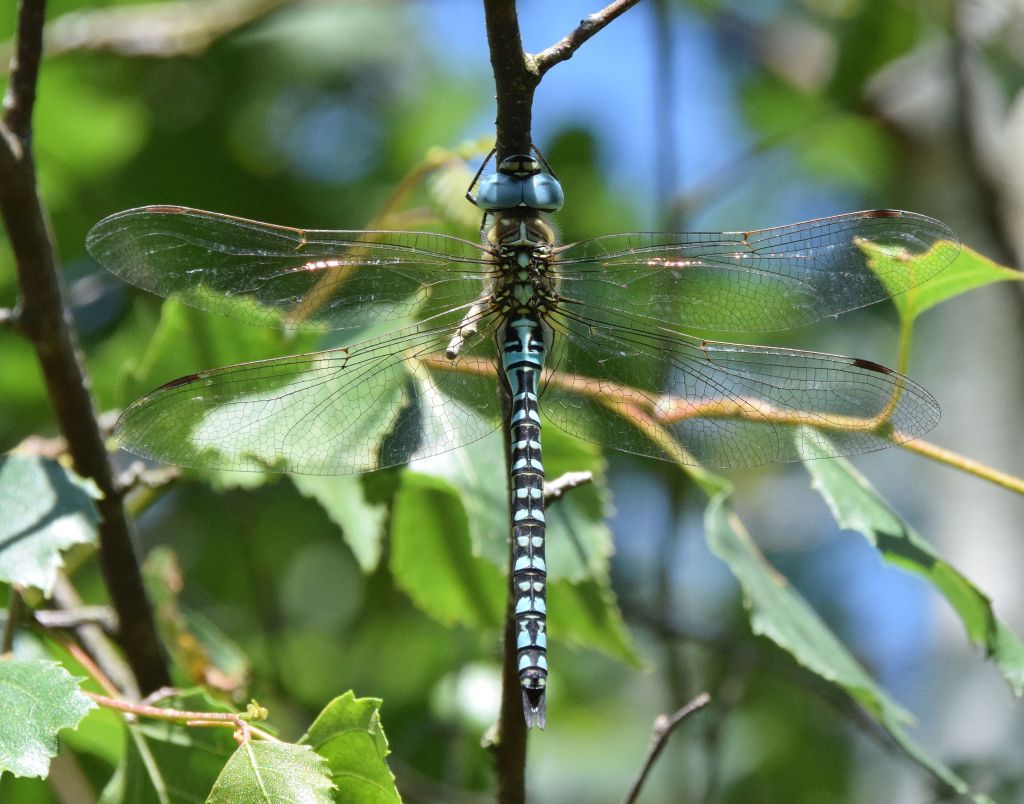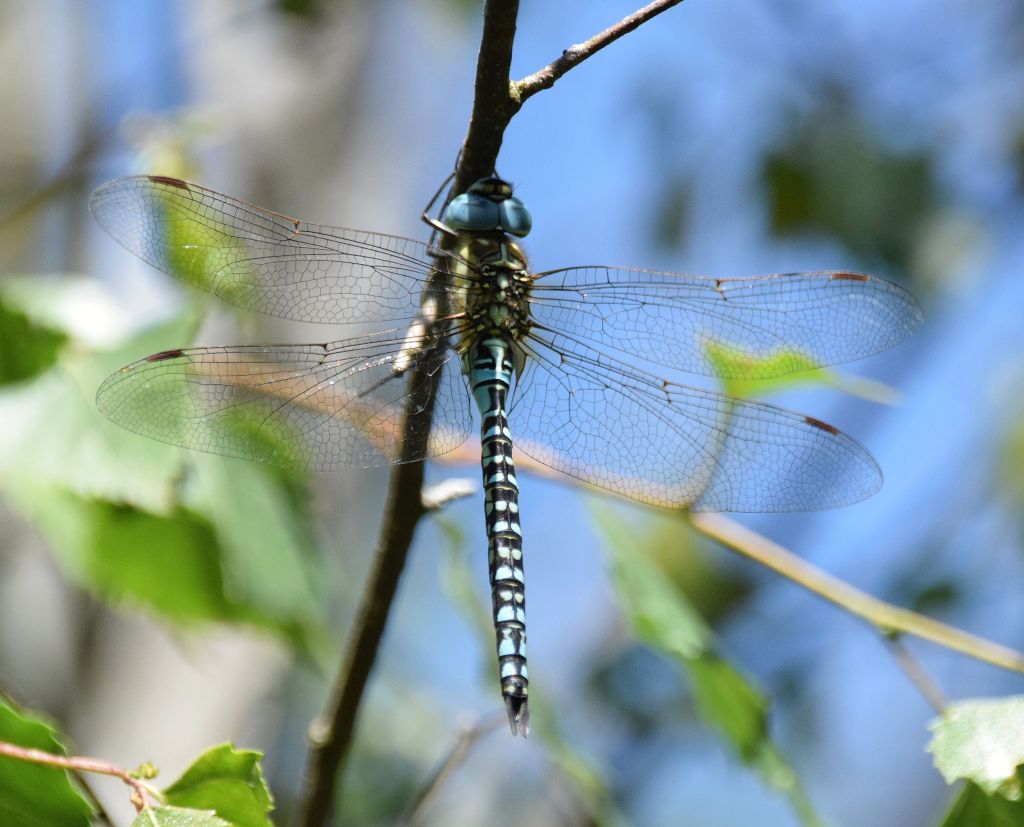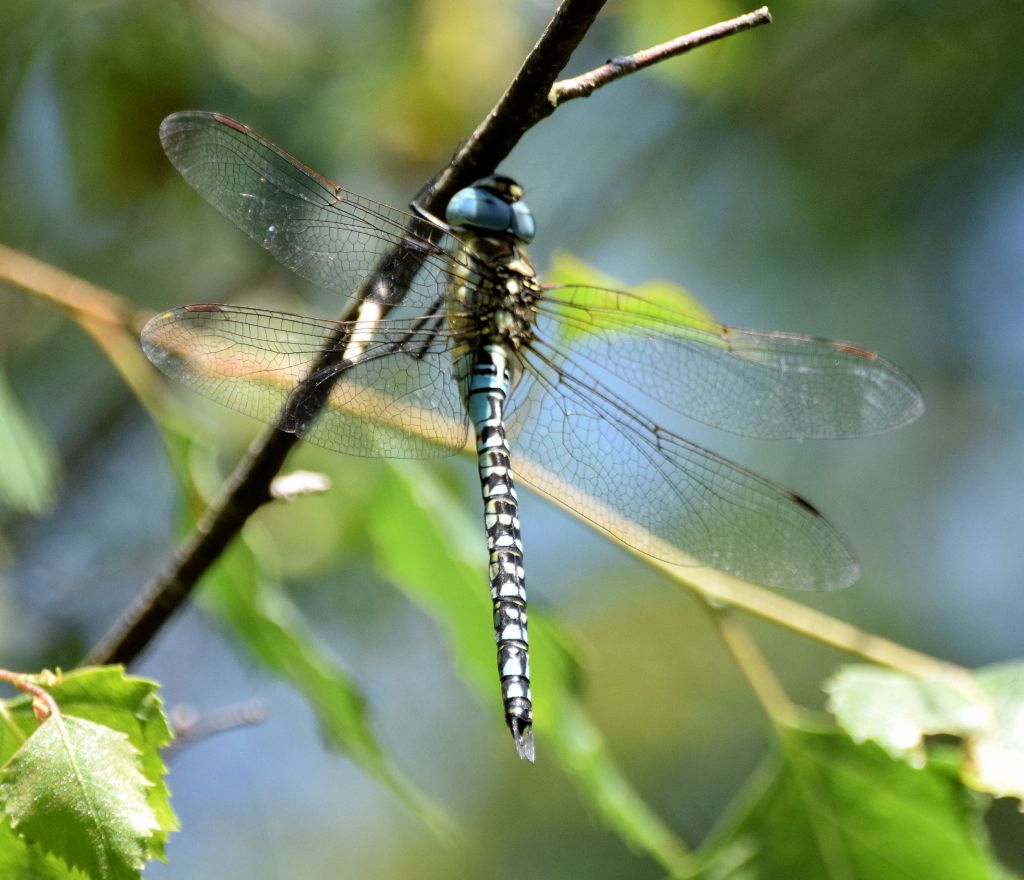The self-found stuff is always the best. On 23rd June a teneral Blue-eyed Hawker was recorded at a BBOWT woodland reserve to the immediate east of RSPB Otmoor (see here). This was the first Oxon record away from the latter site where the recent county colonist had first been discovered three seasons ago (see here). I have simply not been able to face the prospect of Bernwood Forest for butterflies yet again in 2023, so with a sunny weather window this week and time on my hands I opted for nearby Whitecross Green Wood (SP 600150) instead, with the added incentive of some evolved odo interest.
I ended up visiting on three consecutive days from Wednesday to Friday, since on the first two of those dark grey stuff was sitting over the wood while the sun shone further afield, just as it so often does at both Bernwood and Otmoor. I nonetheless enjoyed catching up with Silver-washed Fritillary and White Admiral when the golden orb broke through, together with many Marbled White and brown Skippers. This woodland was teeming with seasonal butterflies. Ewan messaged on Thursday to say there were three Purple Emperor in the Bernwood car park, but I stuck with my resolve not to go there.
Blue-eyed Hawker (adult male)
Friday (7th) was a wall to wall sunshine day and I arrived back on site mid-morning. With such heat butterflies seemed less in evidence than in the intermittent sunlight of the previous two days. I stopped to talk to Trish, a Bernwood dog walker, wildlife person and character whom I run into in most seasons. She poured out how she has abandoned her traditional stomping ground for WGW and other places, due to the former’s popularity amongst other dog walkers of the van load variety, with whom she falls out frequently. I knew the feeling, and responded with how I currently am less motivated by local butterflies and also now struggling with wild plants as an alternative.
I have always visited WGW sparingly, as the difficulty of finding things there and especially Brown Hairstreak served to depress me eventually. But now things were poised to transform and the timing of this diversion played its part. Walking on and reaching the cross roads in the middle of the wood, I decided it would be novel to explore the ride to the left. Almost back at the centre I noted a medium-sized dragonfly with a reddish tinge in the wings patrolling at head height before settling in Blackthorn to one side (pictured below).
I approached carefully, trained my bins on the now perched subject and … “YES, it has bright blue eyes” … an adult male Blue-eyed Hawker. This item was noticeably smaller than Migrant Hawker for which it is still too early. The insect kept completely still for 11 minutes, during which I also managed to inform the county odo and bird recorders of my good fortune, before it flew off to challenge an offending fly-past. Having searched in vain for this species several times around Otmoor in the past two summers I was now rewarded with a picture opportunity just above my head, though in glary light with a shadow cast over the head and thorax. Sooner or later you just get lucky and today was my turn.
Having enjoyed this communion I realised I had seen possibly two more individuals with the same jizz and red-tinge as I walked down to this spot, but those could also have been one and the same. Males such as this have a noticeably brighter blue look to them than other Hawkers, with vivid blue eyes and green sides to the thorax. The ochre-coloured pterostigma (wing tags) are relatively long, diagnostic twin blue and black markings on segment 2 are said to resemble masks, and the veining in the wings glows noticeably when caught by the light in a particular way.
By now there was a certain amount of company, most of which didn’t appreciate the significance of my own purpose here. As so often at this site, those visitors seemed to still be looking for Black Hairstreak, that even if located would have been very worn by now. And so I wandered on to the hot-spot near the end of the main ride, before making a cursory check then watching an array of common dragonflies at a newly opened-up pond. Stately Brown Hawker and Blue Emperor would glide by at intervals, showing their usual disinclination to settle, and Darters hovered here and there in the trackside long grass. Conditions were by now very hot and I sensed the best time of day for crossing paths with BEH might have passed.
At 1:20 pm, 50 metres from the car park another adult male flew out then hovered in front of me. This was the spot from which the previous teneral record was reported. BEH / SMH sightings having also come from Oddington in the Otmoor basin recently, I had originally intended to check out both sites on this day. But given new and different success at WGW I opted against trying to match the ace patch worker who has produced most Otmoor records since that first season, and went home to watch the tennis instead.
Since it’s arrival nationally along the Thames estuary in 2010, Blue-eyed (or Southern Migrant) Hawker has colonised England south of the Humber widely and rapidly. The species has spread through much of coastal East Anglia and southern counties as far as Dorset, with outlying records from Cornwall, the Bristol Channel and the Lancashire and Yorkshire coasts. The small Oxon population has proved quite difficult to record, with individuals usually encountered fleetingly by single observers. So I feel very satisfied now to have played some part in monitoring the anticipated local range expansion.
Footnote: Since my publication of this record on Oxon Dragonflies, the great and good of the county Odo community have in turn visited Whitecross Green Wood, gaining multiple sightings (see here, here and here). Up to seven adult males were also reported from the Oddington site on 17th, so the Oxon BEH population appears to be in good health.



